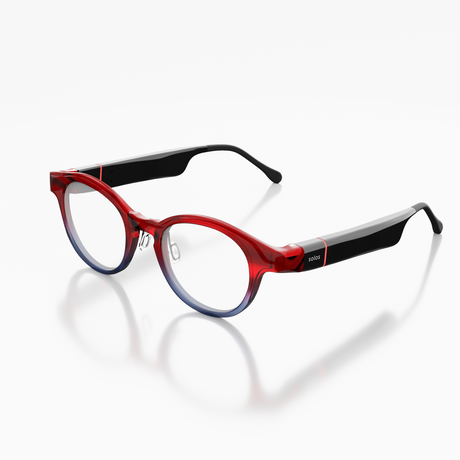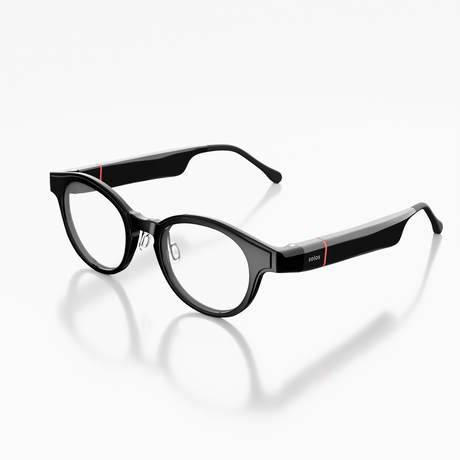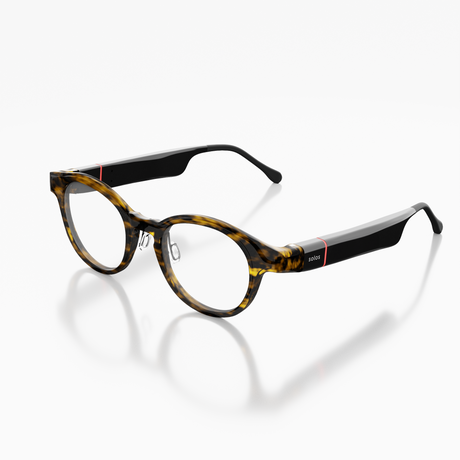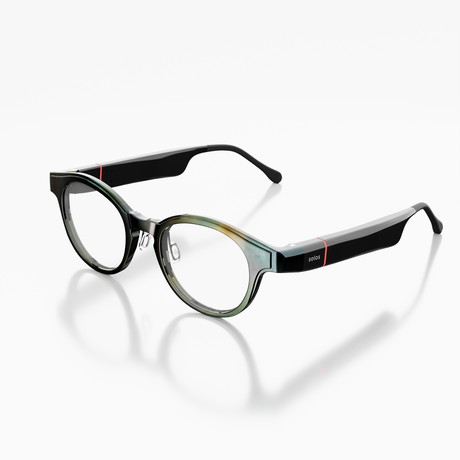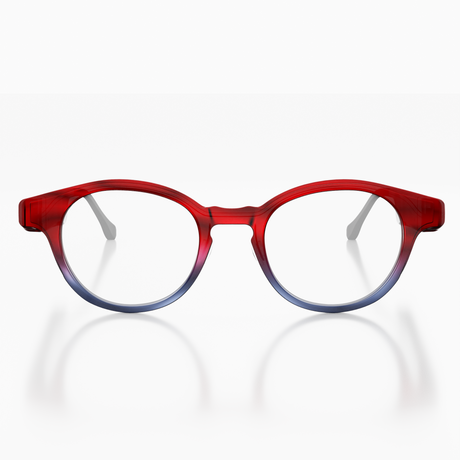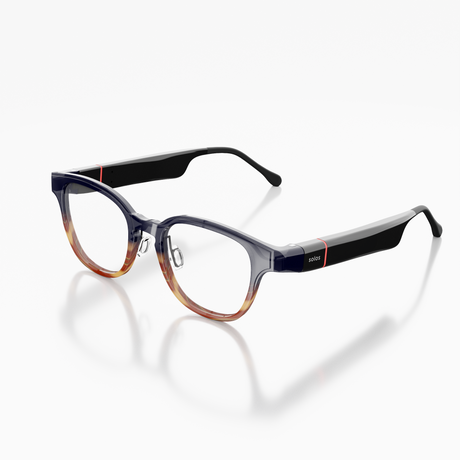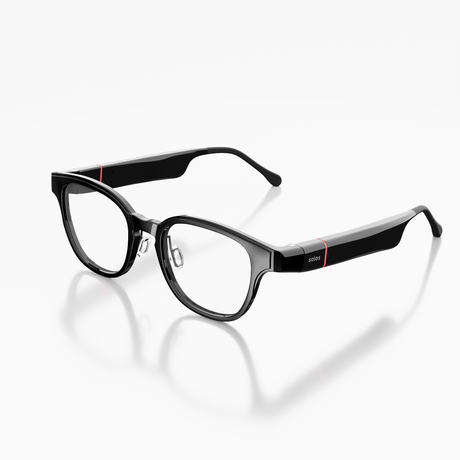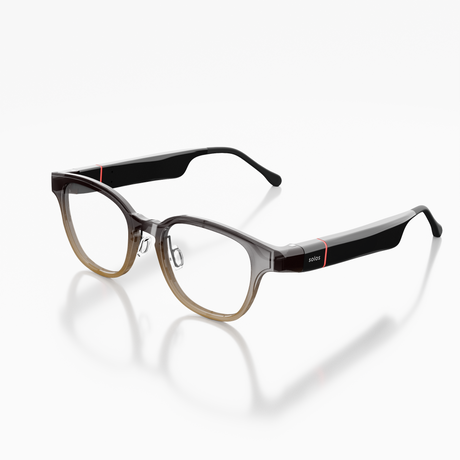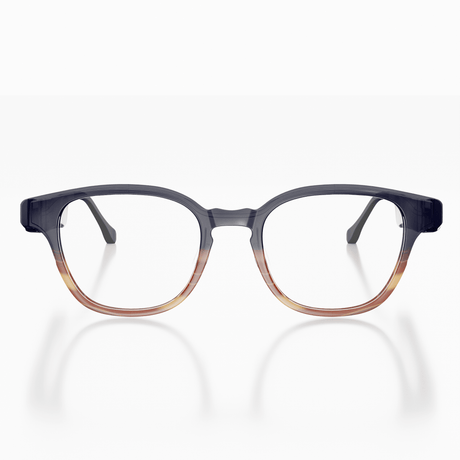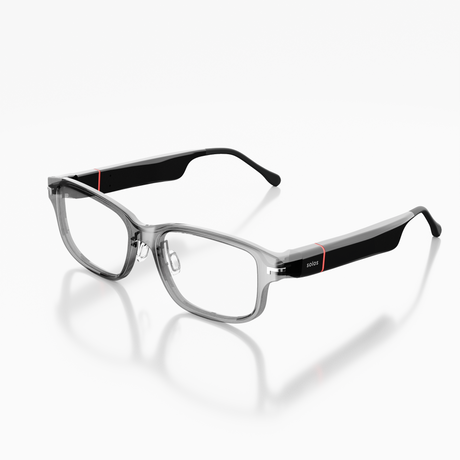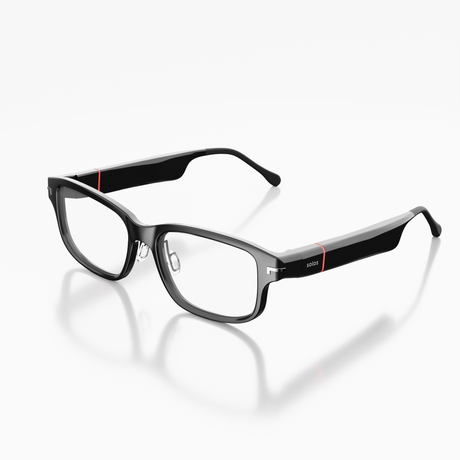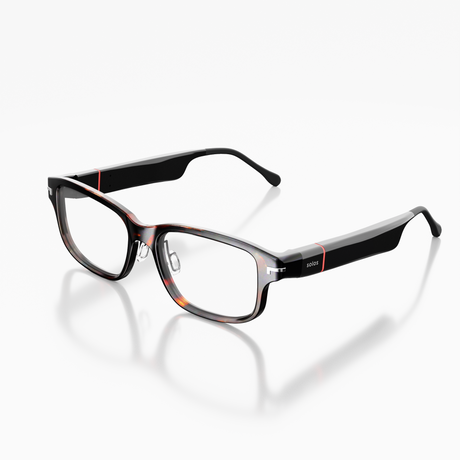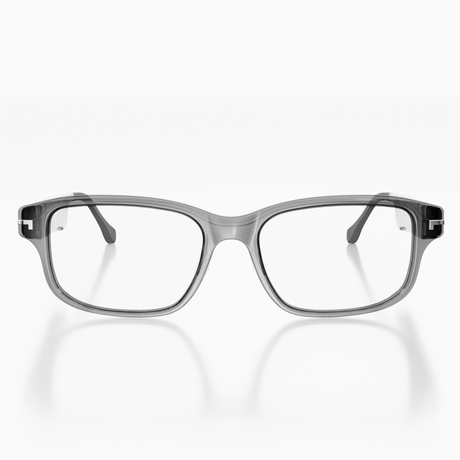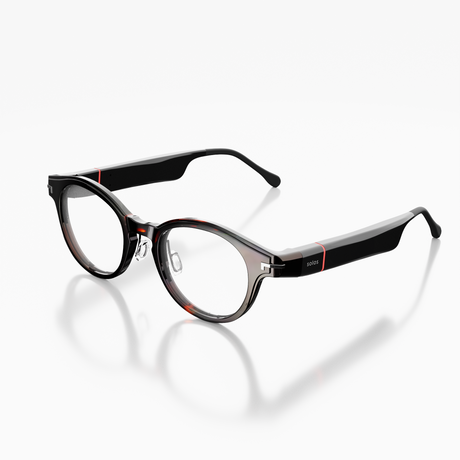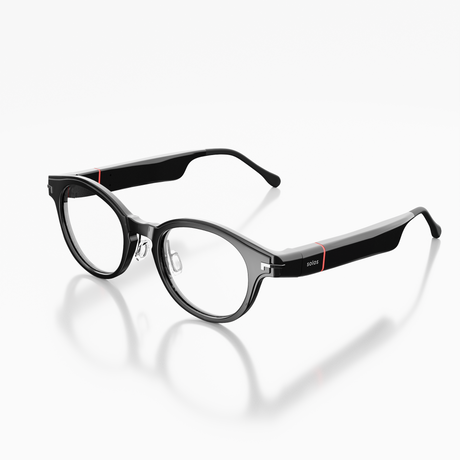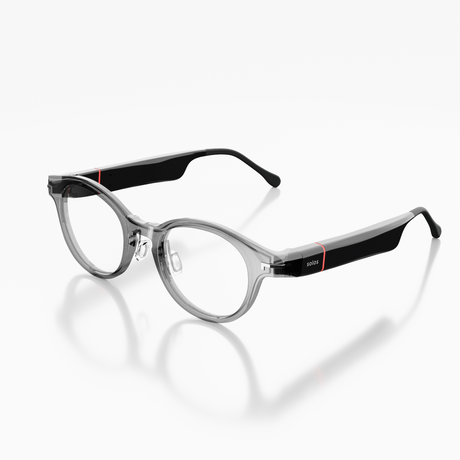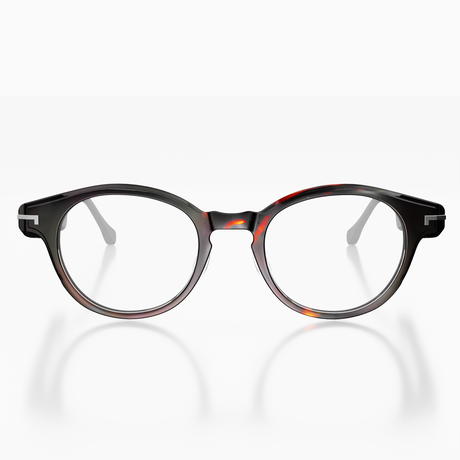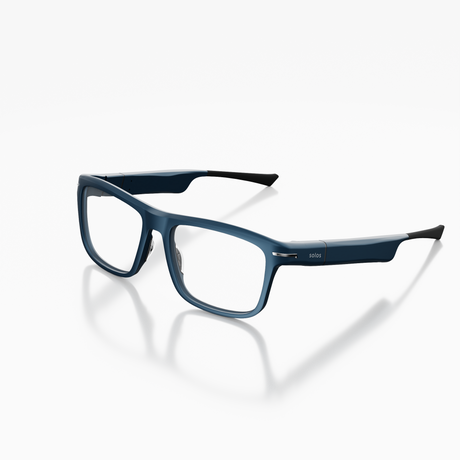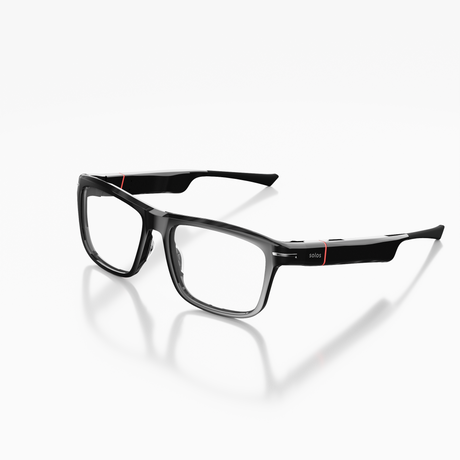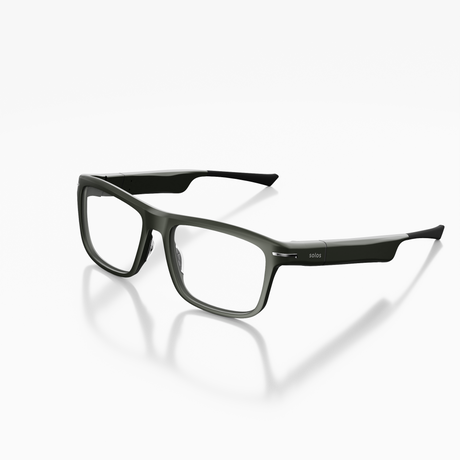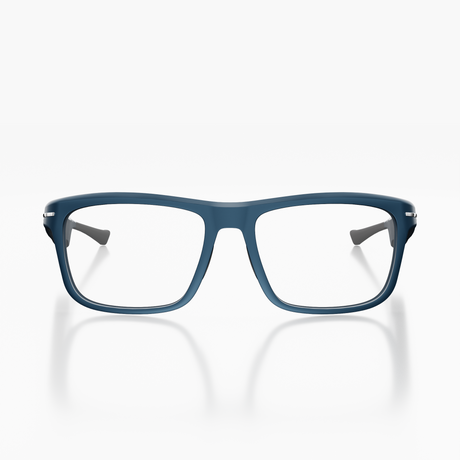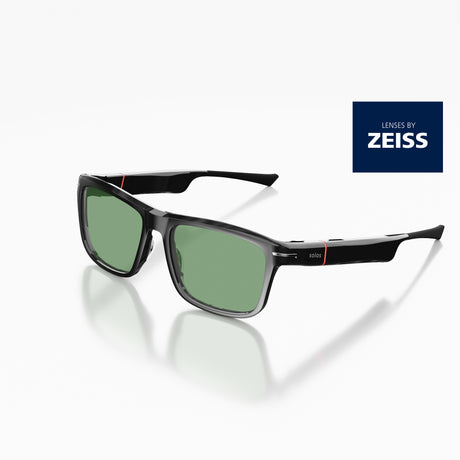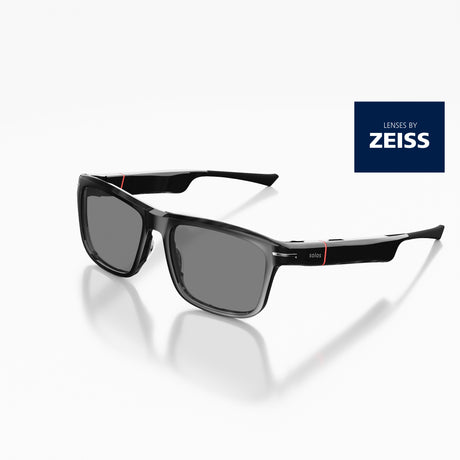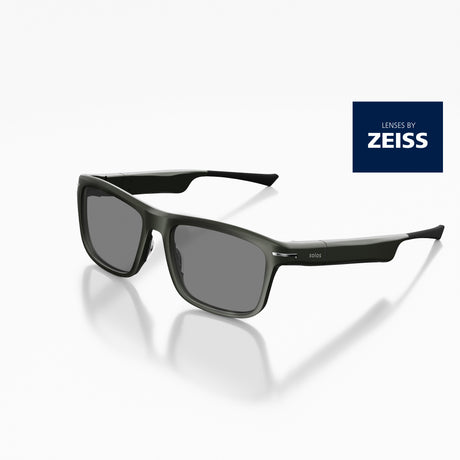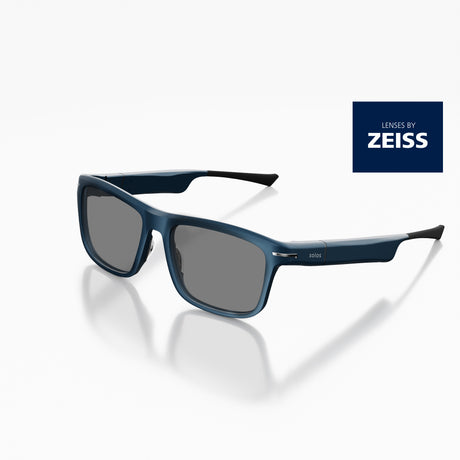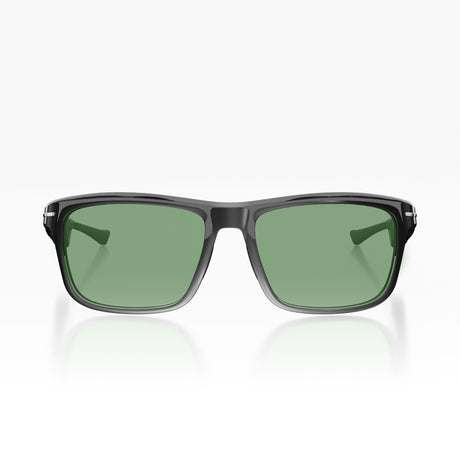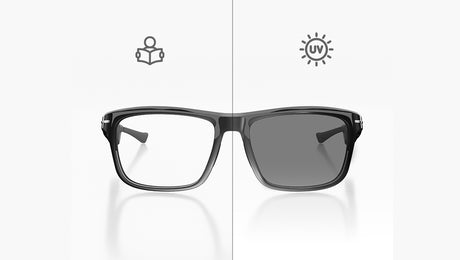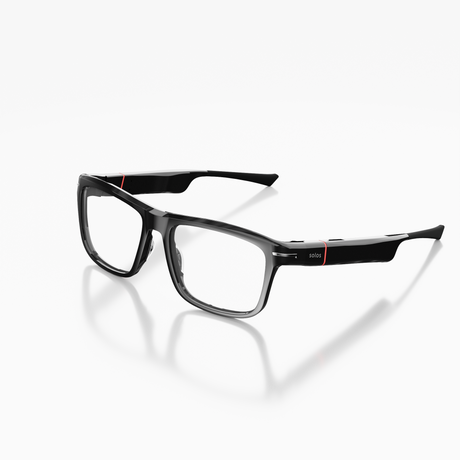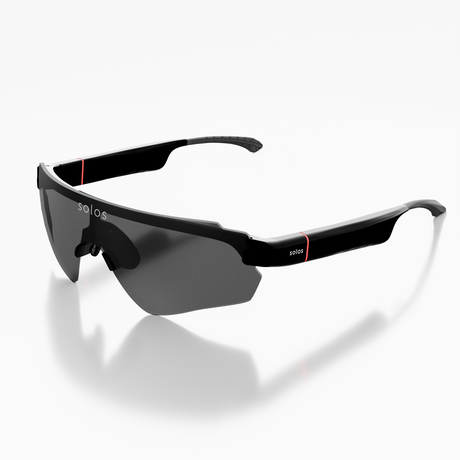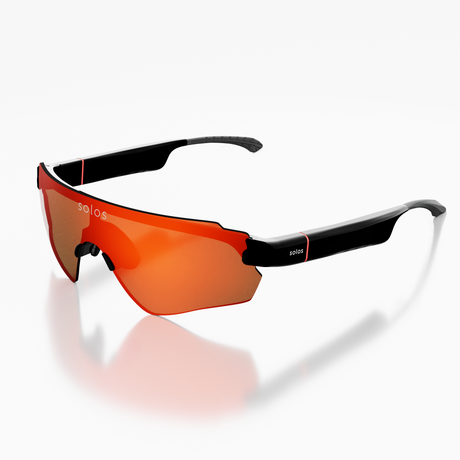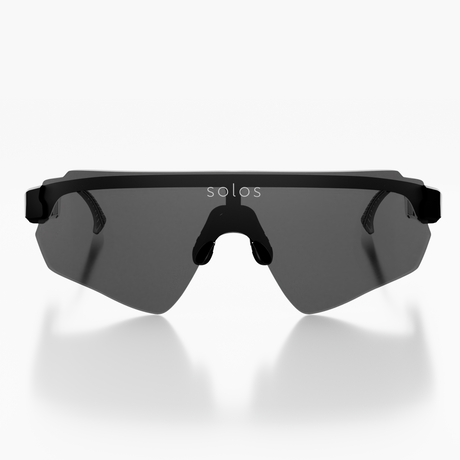By Chris Chinnock
Kopin used a penthouse suite at CES 2022 to showcase its display and optics technology along with multiple customer implementations of AR and VR designs. They also live streamed a fireside chat with CEO Dr. John Fan along with key partners – all discussing products and prospects for metaverse products and applications. In-person attendance was about 60 people – quite good considering the Covid restrictions, with another 200 on-line.
The live stream can be accessed here with the discussion starting at the 10:00 minute mark of the video. In the Fireside Chat, Dr. Fan first talked about the 30-year journey that Kopin has been on developing AR and VR technology before the term “metaverse” even became popular. The metaverse isn’t a single well-defined thing — it is a continuum of the physical and digital worlds with various degrees of sensory interaction. Ultimately, it will include all 5 human senses to deliver the full metaverse experience, but there are many “stations” along the metaverse journey and each of these stations can have great value depending upon the application or use case.
At times, technology companies have delivered too much technology all at once to consumers without providing the complete ecosystem and tools for the consumer to easily adopt the technologies into their lives – the metaverse has the potential to do just that. Therefore, it is likely that the consumer journey into the metaverse will come in increments. The sense of sound is the first logical station on this metaverse continuum as consumers already use many parts of the sound experience in everyday life. Solos® glasses are one solution to the complete audio experience. With Solos, Kopin has contributed their Whisper® voice technology. This is a very valid use case in the metaverse continuum, said Fan, noting that Apple AirPods had $25B in sales in 2021, whereas products like Solos provide this functionality in an easy-to-wear eyeglass form factor.
Paul Baker, COO at Kopin then stepped in to represent Solos. He emphasized the “human first” approach that Kopin and Solos seek to emphasize in their technology development. People are very particular about the eyeglass designs they will wear, so Solos is designed with detachable front-frames with over 50 styles to choose from, including options for prescription lenses, sunglasses and blue-light filtration. All the functionality is in the detachable stems (arms) of the eyewear. One can actually use them all day long to do Zoom or Teams calls, watch TV, listen to music or podcast, etc. They can be used as alternative to ear buds for many use-cases, but with an open ear and spatial sound capabilities. They also set the stage to add display capabilities in future eyewear form factors. Solos is already seeing adoption with users selecting them with their personal and specific use-cases in mind ranging from work-at-home glasses, to running, to studying or even to listen to music while doing manual work. Baker concluded by noting that Solos was given two Innovation Awards by CES this year.
RealWear’s CEO Andrew Chrostowski then announced their latest product – the Navigator 500 which is a powerful productivity tool for the connected worker. It is their 8th generation and is essentially a tablet computer on your head with a camera and voice commands that work even in a 105-decibel noise environment, so clearly geared for enterprise and industrial applications. Kopin supplies the optics and displays, plus the headset design is modular for upgrades and future-proofing. It represents another station on the metaverse continuum where it offers voice/sound as well as a monocular, limited field-of-view interface.
Chrostowski says they have over 5,000 customers with 55,000 deployed units, so it is way past the demonstration phase. Key uses include remote collaboration, often with a field maintenance representative tapping the knowledge of a remote expert or to document work in environments such as on oil rigs, manufacturing facilities, medical environments, etc. It is a glance down/up and hands-free solution that is solving many real-world problems today.
The next step is to expand the field of view, add binocular 3D immersive or semi-immersive viewing and expanded processing capabilities. Doing this in an augmented or mixed reality configuration is perhaps the hardest problem to solve. While many companies are pursuing this station on the continuum, many of Kopin’s customers are working on nearer term and perhaps more practical immersive virtual reality applications.
Fan noted that his 13-year-old grandson got an Oculus 2 for Christmas. While he would play many hours with the headset, he also complained about feeling dizzy (likely latency issues) as well as the weight of the device. He also did not think the image was sharp enough. Fan hopes we can someday deliver an immersive metaverse experience with a Solos form factor and weight, but with resolution such that it will be hard to distinguish real objects from computer generated ones.
In the Kopin suite, the company announced and was showing off their new 1.3” 2.6K x 2.6K resolution microOLED imager (Display on a Chip) coupled to a P80 optic. This new optic offers 77-degree field of view using only two plastic optical elements in a Pancake design. Kopin previously announced the world’s first all-plastic Pancake optics with 95° FOV but with a smaller eye relief and eye box.
Fan said that the P95 design was done to try to replicate what glass Pancake optics could do, but the P80 design is intended to start to realize the full benefits of an all-plastic Pancake design. Because of the ability to fashion aspherical optics in light weight plastic, not only can the weight be reduced, but the eye relief and eyebox can be enlarged while the image quality improves out to the edges of the display. The result is a very long (23 mm) eye relief and large (12-mm-diameter) eye box. Large eye relief is important to allow users to use their prescription eyewear while the large eyebox allows user to continuously see the full image even with head movement – something many VR headsets can’t accomplish.
Fan believes such components will help enable the next step toward that ultimate immersive metaverse glasses solution for consumer use, noting that the capabilities of the optics are every bit as important as the display itself. And it will help lower headset weight down to a more desirable 200 grams (Oculus is about 450 grams).
The 2.6K x 2.6K microOLED device supports a 120 Hz refresh rate, 10-bit image processing pipeline and a dual-stack OLED architecture to deliver over 1000 nits of luminance and over 10,000:1 contrast, which is suitable for the display of HDR imagery. Fan thinks a 4K x 4K imager for each eye and a 150-degree FOV would be a great goal to start to perfectly blend the digital and real world.
Next up was Takuma Iwasa, CEO of Panasonic’s Shiftall subsidiary. Panasonic and Shiftall have been developing a sleek new goggle-type VR headset using Kopin’s 2.6K x 2.6K microOLED displays and the 95-degree FOV Pancake optics. Iwasa-san announced their headset, now called MaganeX, is only 260 grams and features diopter adjustments and interpupillary (IPD) adjustments as well. It offers a 250-inch virtual screen and is targeted for higher-end and long-duration use applications, including gaming, with a price point of around $900.
On the company’s roadmap are plans to reduce the weight and eliminate the wired connection to the headset. They are looking at Wi-Fi 6/6E and/or 5G (for cloud-based rendering).
After the Fireside Chat, I had a chance to check out the MaganeX glasses and view the P80 demo. The headset is indeed quite light and offered nice clean images with no noticeable ghosting on the limited content I saw and very good sharpness out to the edges. The P80 Pancake Optics with the 2.6K x 2.6K display also looked quite good which means customers have choices in the optical configurations to create immersive headsets. Fan thinks the P80 optics may even eliminate the need for IPD adjustments because of the large eyebox.
The audience attending the Fireside Chat seemed to enjoy the discussion and the product examples that represent different stations along the metaverse journey, with the attendees actively partaking in the product demonstrations before and after the chat. Only time will tell whether Dr. Fan’s prediction of the metaverse journey will unfold as described.
Source: Insightmedia.info






